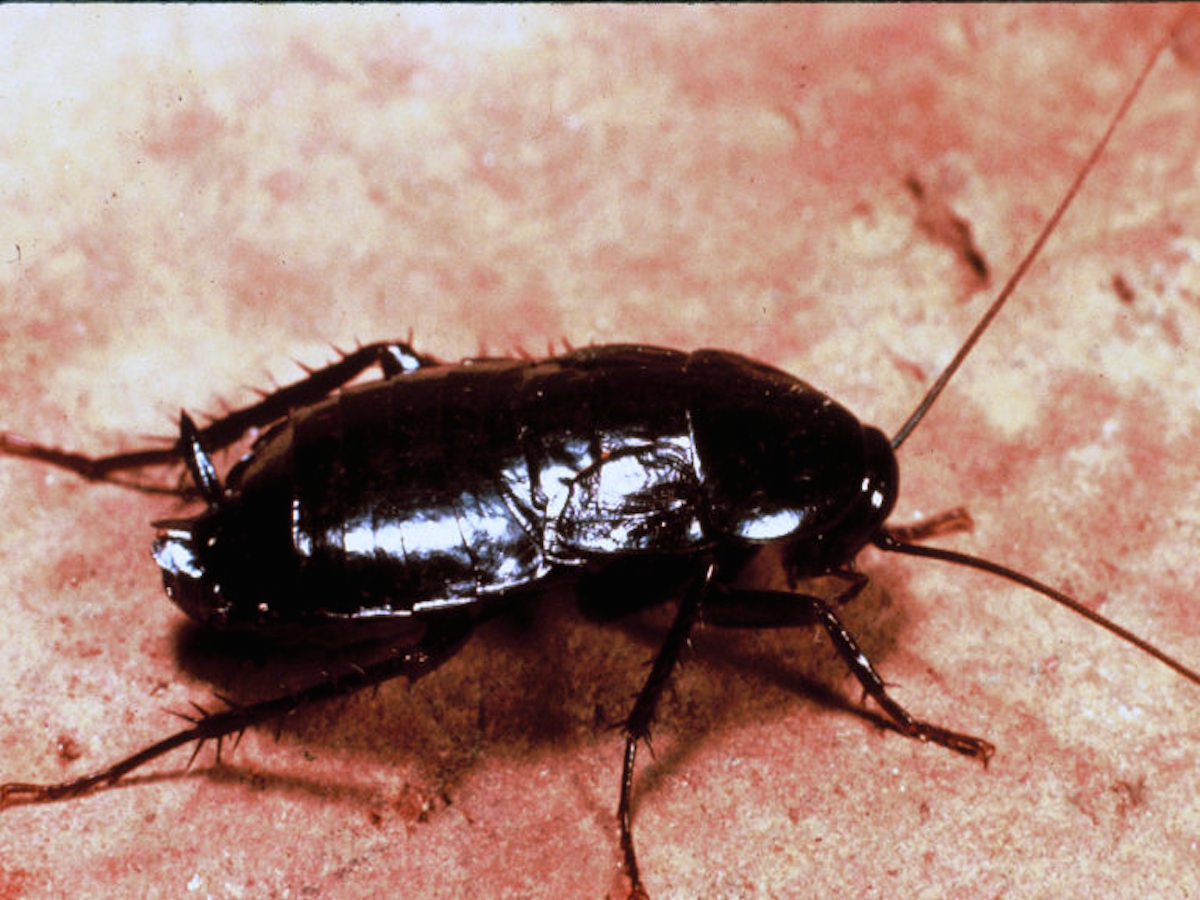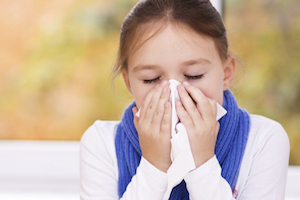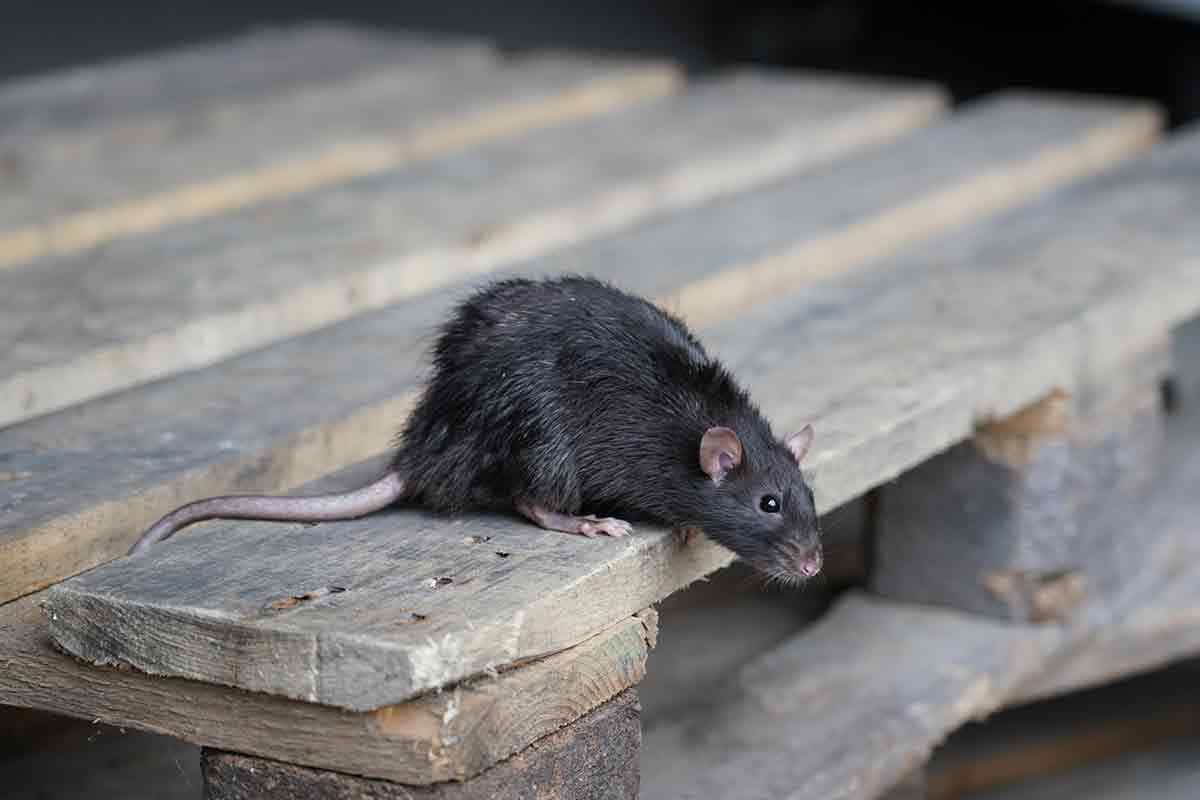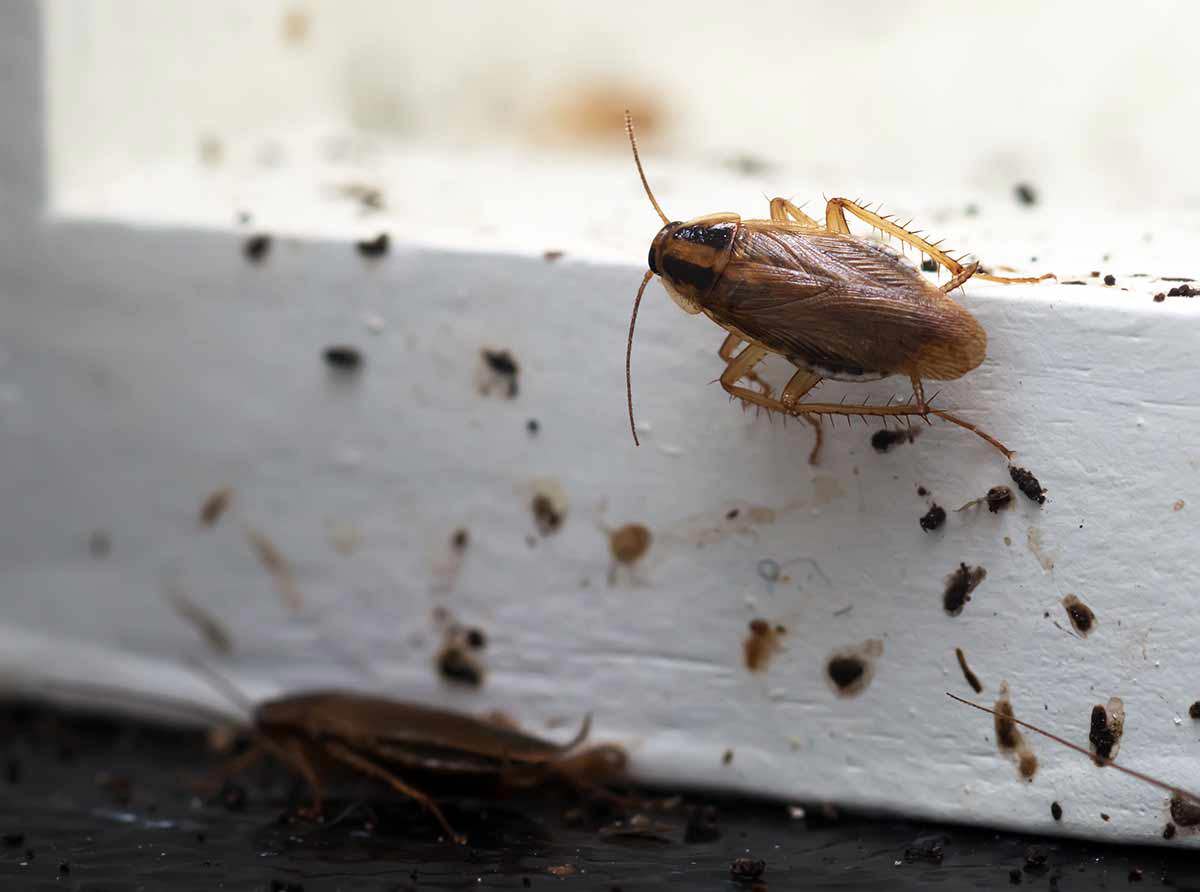Oriental Cockroaches Blatta orientalis

Oriental Cockroach Identification
Color: Shiny black
Size: 1" long
Legs: 6
Antennae: Yes
Shape: Oval
Region: Northern regions of the United States
What is an Oriental Cockroach?
Believed to be of African origin despite its name, the oriental cockroach is one of the larger species of cockroach. These cockroaches are sometimes referred to as “waterbugs” because they hang out in damp areas, as well as “black beetle cockroaches” because of their smooth, dark bodies. Oriental cockroaches gain entry into households by going under doors and through gaps beneath siding, as well as following pipes, sewers and drains into a structure.
What Do Oriental Cockroaches Look Like?
Oriental cockroaches exhibit a shiny black to a dark reddish-brown color. As adults, the male and female cockroaches, though both large in size, are quite different in appearance. Growing to only 25 mm in length, the smaller males have shortened, three-quarter-length wings. As a result, the last few abdominal segments of their bodies are exposed. In comparison, female oriental roaches reach a length of 32 mm and have no wings. Instead, they have large wing pads that shelter the first few segments of their bodies. While differing in appearance, neither males nor females can fly.
Primarily an outdoor species, oriental cockroaches are often found in sewers and under debris, leaves, stones and firewood. Additionally, these pests can also live in the voids or openings beneath porches. While their natural habitat is outdoors, oriental cockroaches tend to invade homes during the summer. They will enter structures through door thresholds, under sliding glass doors, along utility pipes and through floor drains. Once indoors, oriental cockroaches find harborage in basements and crawl spaces, as they prefer damp, cool locations. Furthermore, these cockroaches will usually crawl around toilets, sinks, pipes and service ducts.
The oriental cockroach feeds on all kinds of food, especially decaying organic matter, starchy foods and garbage. Though these cockroaches have been noted to survive for up to a month without food, they cannot live for more than two weeks without water. Heavily dependent on water, they tend to gather in large numbers near water sources.
There are three telltale signs of an oriental cockroach infestation: sightings, egg capsules and odor.
- Sightings: Especially during the warmer months of the year, oriental cockroaches may be seen outside near moist gutters, around landscaping beds, and coming in and out of sewers and storm drains during the night. During the day, Oriental cockroaches congregate in dark, moist and undisturbed spaces.
- Egg Capsules: Aside from sightings of the cockroaches themselves, egg cases ranging in size from 8 to 10 mm in length will appear during an infestation. Oriental cockroach egg cases are usually dark brown or reddish in color. Each egg case can hold about 16 eggs.
- Odor: Smells will also alert a homeowner to an Oriental cockroach infestation. Oriental cockroaches secrete chemicals to communicate with each other. The chemicals have a notorious musty odor.
The best advice for Oriental cockroach control is to practice good sanitation. To prevent oriental cockroaches from infesting a home, vacuum often and keep a spotless kitchen. Consider using a dehumidifier to prevent moisture buildup. On the exterior of the home, seal all possible entry points with a silicone-based caulk, paying close attention to cracks around doors, windows, pipes and utility lines. Additionally, fortify all entrances around utility pipes and ventilate crawl spaces to prevent moisture buildup. Since oriental cockroaches are very dependent on water, eliminate sources of standing water and divert water away from the home’s foundation with properly functioning downspouts, gutters and splash blocks.
Wondering how to properly get rid of oriental cockroaches? If you suspect an oriental cockroach infestation in your home, contact a licensed pest control professional to conduct an interior and exterior inspection and work with you to develop an oriental cockroach treatment plan. A pest control professional may inquire about any water build up or particularly damp areas of the household that could attract and sustain oriental cockroach populations. They will also likely check for any deposits of garbage or old food.
You can find a certified pest professional near you with the helpful zip code search below.




